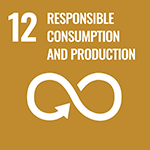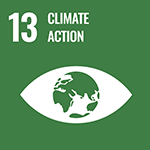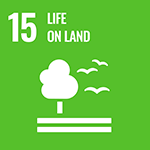Project for Development of Complex Technologies for Prevention and Control of Rubber Tree Leaf Fall Diseases
Principal Investigator


Dr.
Indonesian Rubber Research Institute Director
Suroso Rahutomo
ODA Recipient Country
Republic of Indonesia
Research Institutions in Japan
RIKEN Center for Sustainable Resource Science / Gifu University / RIKEN Center for Advanced Photonics (RAP) / Maebashi Institute of Technology
Research Institutions in Counterpart Country
Indonesian Rubber Research Institute / Universitas Indonesia
Adoption fiscal year
FY 2020
Research Period
5 Years
Overview of the Research Project
Connect rubber-producing countries and consuming countries through early-stage measures against rubber tree leaf fall diseases
Infection of rubber leaf fall diseases has been widely spread in Southeast Asian countries and causes serious damage to rubber production. Through cooperation with Indonesian Rubber Research Institute and Universitas Indonesia, we aim to exterminate the disease by chemical and microbial pesticides, establish a genome-assisted breeding technology, and detect infected areas in the early stages by using images from satellites and drones, and prevent leaf blight and control the spread of infections. Through this link between Japan and a resource-producing country, we will also produce research leaders who can contribute to breeding that takes advantage of modern science and technology as well as local resources.
Enabling stable supply of natural rubber that meets growing global demand
Southeast Asia supplies more than 90 percent of the world’s natural rubber. Because Southeast Asian rubber trees are reproduced by clonal propagation, they end up being infected with the same diseases. By sharing the technology we develop with countries that produce natural rubber, the project will contribute to realizing stable supplies of natural rubber that meet the world's demand and stable livelihoods for rubber farmers.
Photo gallery
Research Project Web site
Press Release
Links
Projects
Contact Us
Japan Science and Technology Agency (JST)
Department of International Affairs
SATREPS Group
TEL : +81-3-5214-8085
Related articles by Category
- Bioresources
Bioresources

 Republic of Indonesia
Republic of Indonesia
Promoting the blue economy by utilizing seaweed resources!
Development of Sustainable Seaweed Based Functional Products for Promoting Blue Economy
- Indonesia
Environment / Energy
(Carbon Neutrality)
 Republic of Indonesia
Republic of Indonesia
Creating a new chemical industry linked to Indonesian agriculture!
Development of Integrated Bio-circular Economy from Food and Energy Estate Waste Fraction to Biofuel and Bio-chemicals
- Asia
Environment / Energy
(Global-scale environmental issues)
 Kingdom of Thailand
Kingdom of Thailand
“Natural rubber seeds”, the unlimited potential hiding in natural rubber plantations
Utilization Technology of Rubber Seeds for Green Products to Mitigate Global Warming and Plastic Pollution
- SDGs : Goal.12
Environment / Energy
(Global-scale environmental issues)
 Republic of Malawi
Republic of Malawi
Create sustainable futures by integrating practices by people in local communities with interdisciplinary science
Establishment of a Sustainable Community Development Model based on Integrated Natural Resource Management Systems in Lake Malawi National Park























